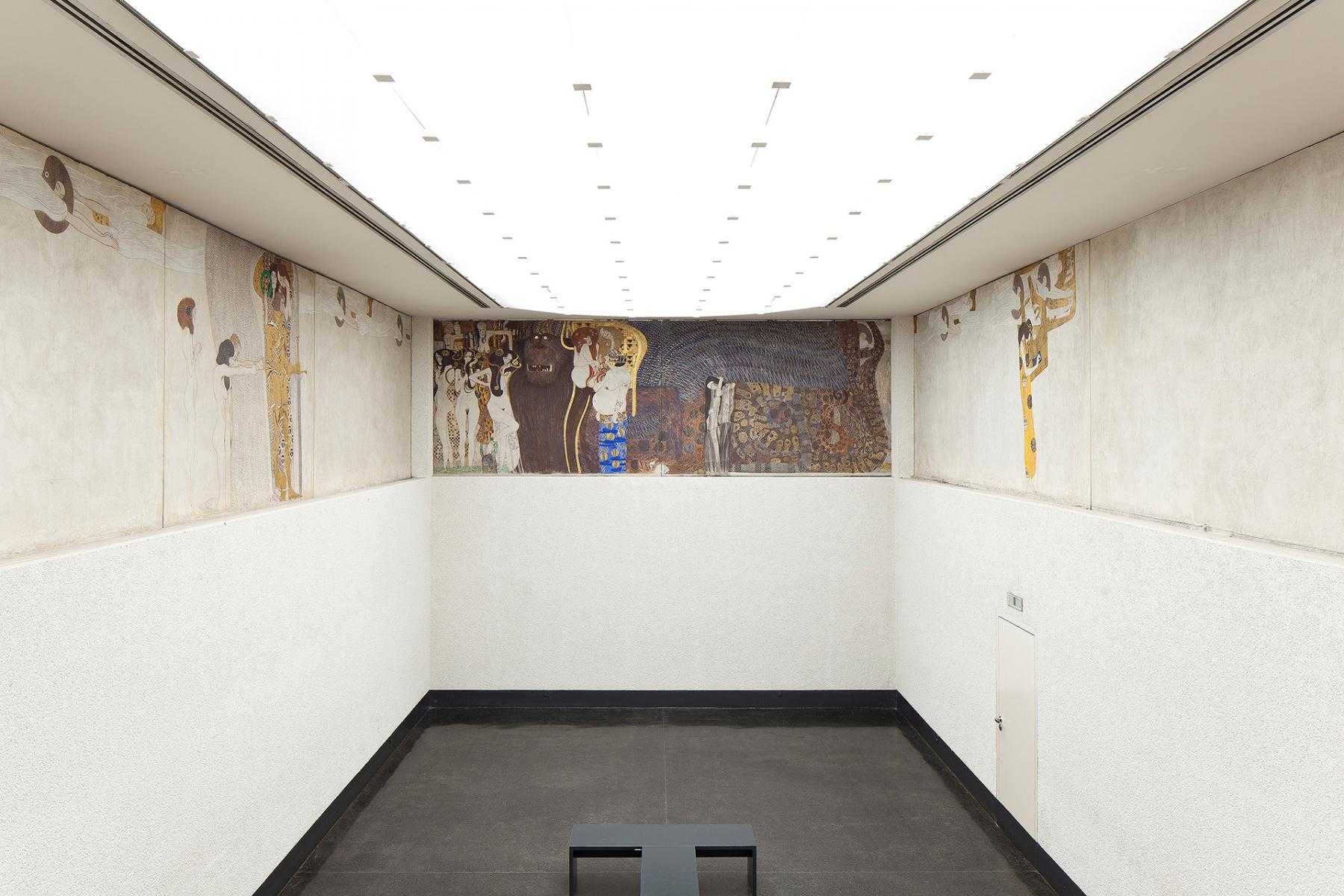

Since 1861 the Genossenschaft (abbreviated to ‘Künstlerhaus’) had been the official representation with its own exhibition house at the Karlsplatz in Vienna. The new association should exist as a kind of club within the ‘Genossenschaft bildender Künstler Wiens’. Gustav Klimt, 35 years old, was elected as president, 85-year-old artist Rudolf von Alt, who had always been an advocate of the young, was elected Honorary President. On 3 April the constituting assembly of the new association was held. This was the beginning of the Vienna Secession. Max Klinger (1857-1920): Beethoven statue.On 27 March 1897 art critic Ludwig Hevesi wrote enthusiastically: ‘The art city of Vienna, this gigantic small town, will now finally become a Big-Vienna, a true New-Vienna.’ He had heard that a group of young artists was to found the Association of Visual Artists (Vereinigung Bildender Künstler Österreichs). It also proved fundamentally important to Klimt’s further development, as well as that of numerous other participating artists: the ideal of the interplay and aesthetic integration of all artistic disciplines and the collaboration tested in the Beethoven exhibition was successfully continued by the Wiener Werkstätte, among others. Today the Beethoven Frieze is considered one of Klimt’s key works and one of the high points of Viennese Art Nouveau. The XIVth exhibition drew nearly 60,000 visitors, thus becoming one of the Secession’s greatest public successes.An opening in the wall offered a view of Max Klinger’s Beethoven statue, indicating the interplay of architecture, painting (Klimt’s Beethoven Frieze) and sculpture (Klinger’s Beethoven) as soon as the visitor entered. The declared aim of the exhibition was to reunite the separate arts – architecture, painting, sculpture and music – under a common theme: the “work of art” was to emerge from the interplay of the design of the rooms, the wall paintings and sculpture. Klimt’s monumental wall cycle was located in the left-hand aisle, which visitors to the exhibition entered first. In addition to Klimt’s Beethoven Frieze, wall paintings and decorations by Alfred Roller, Adolf Böhm, Ferdinand Andri and numerous other artists were presented. The exhibition centered around Max Klinger’s Beethoven statue placed in the main hall.A total of 21 artists collaborated on the exhibition under the direction of Josef Hoffmann (1870-1956).Gustav Klimt (1862-1918): Beethoven frieze.Max Klinger (1857-1920): Beethoven statue.President Carl Julius Rudolf Moll (1861-1945).Included a memorial dedicated to artists Giovanni Segantini.Charles Rennie Mackintosh (1868-1928) and Margaret Macdonald Mackintosh (1864-1933) exhibition room.The wall motifs, furniture and woodwork all deisgned by Hoffmann created a harmony between decoration and functionalism, and illustrated the Association’s concept of Gesamkunstwork (a harmony of the arts). The first exhibition also included an additional room designed by Josef Hoffmann called the ‘Ver Sacrum room’ which introduced for the first time ‘Secession style’ to the public. Contrary to the traditional salon-style arrangement of pictures of the Künstlerhaus which had painting hung vertically up to the ceiling, Olbrich and Hoffmann hung all the pictures at eye level against backgrounds of white, dark red and dark green. The exhibition was also revolutionary in its approach to exhibition forms of exhibition design, primarily the responsibility of Josef Hoffmann (1870-1956) and Joseph Maria Olbrich (1867-1908). It was considered a financial success by the organizers and received positive reviews from most critics. The first exhibition attracted 57,000 visitors including Franz Josef I, Emperor (1830-1916) and a total of 218 works were sold.Kunstausstellung der Vereinigung Bildender Künstler Österreichs.Gartenbau-Gesellschaft (Imperial and Royal Horticultural Society) a large venue on Parkring in central Vienna. Data: Opened 26-03-1898 and ran for 3 months.


 0 kommentar(er)
0 kommentar(er)
